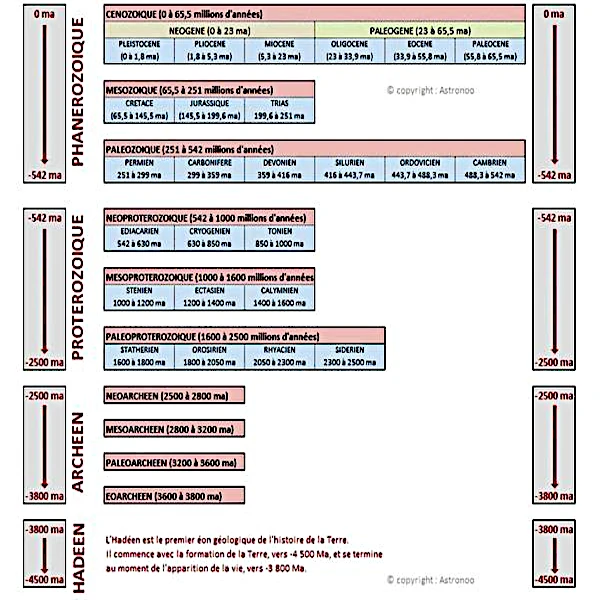
Geological time allows us to place biological and geological events on Earth's chronological scale, which spans approximately 4.57 billion years. These markers are essential for understanding the evolution of life and episodes of mass extinction.
A mass extinction is characterized by the disappearance of at least 75% of species within a geologically short time frame, often ranging from a few hundred thousand to a few million years. These events represent major disruptions in the evolution of life, leading to profound ecological upheavals and the reorganization of ecosystems.
The five major extinctions recognized by the scientific community are:
The causes of mass extinctions are generally multiple and often combined. They include: meteorite impacts, major volcanic eruptions, rapid climate changes, and disruptions in the chemical composition of the oceans. These factors can interact, combine, and amplify catastrophic effects, leading to a rapid collapse of ecosystems.
For example, the Chicxulub impact in the Cretaceous is directly associated with the disappearance of non-avian dinosaurs, while avian dinosaurs survived and gave rise to modern birds. This impact, combined with volcanic eruptions and temporary global cooling, caused drastic changes in the atmosphere and oceans, simultaneously affecting fauna and flora.
N.B.:
Radiometric dating relies on the decay of radioactive isotopes, such as carbon 14 or uranium 238, to estimate the age of rocks and fossils. This method allows precise positioning of extinction events on the geological time scale.
| Period | Approximate Date (Ma) | Percentage of Species Extinct | Comment |
|---|---|---|---|
| Ordovician-Silurian | ≈ 445 | ≈ 85% | Climatic cooling, glaciation, and drop in sea levels |
| Devonian | ≈ 375 | ≈ 75% | Hypotheses: oceanic changes, marine anoxia, possible impacts |
| Permian-Triassic | ≈ 252 | ≈ 96% | Massive volcanic eruption in Siberia, increase in CO₂ and methane |
| Triassic-Jurassic | ≈ 201 | ≈ 80% | Intense volcanic activity and global climate change |
| Cretaceous-Paleogene | ≈ 66 | ≈ 76% | Meteorite impact at Chicxulub, volcanic activity, and solar obscuration |